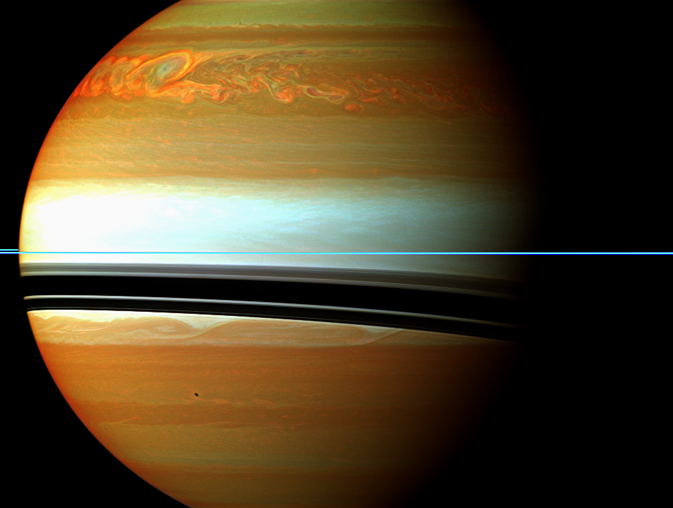
The space probe Cassini has made a puzzling discovery on Saturn. As it recorded a temperature change unlike anything previously encountered or thought possible.
the temperature anomaly was detected during the aftermath of a recently very strong storm (of gas) on Saturn, that was by itself both puzzling in scope and scale.
The source of this rapid temperature change, with a burst of energy, is believed to be the gas ethylene (C2H4), it is an odorless and colorless gas.
Bridgette Hesman is the study lead author at the NASA Goddard Institute in Maryland. She has this to say about the phenomena, “This temperature change is so extreme that it is almost unbelievable. A temperature change in the scale of the earth is like to go from the harshest winter in Fairbanks in Alaska to high summer in the Mojave Desert”.
Goddard’s Michael Flasar, the CIRS team lead, writes, “We’ve really never been able to see ethylene on Saturn before, so this was a complete surprise,”.
Scott Edgington is the Cassini deputy project scientist at NASA’s Jet Propulsion Laboratory (JPL) in Pasadena, Calif, “These studies will give us new insight into some of the photochemical processes at work in the stratospheres of Saturn, other giants in our solar system, and beyond,”.
The space probe “Cassini” is a collaboration between NASA, the European Space Agency Esa and the Italian AIS, Agenzia Italiana spaziale. The probe and the lander Huygens, was launched in 1997 already and went into orbit around Saturn on 1 July 2004 where it has been ever since.
_______________
NASA Spacecraft Sees Huge Burp at Saturn After Large Storm
______________________________






















